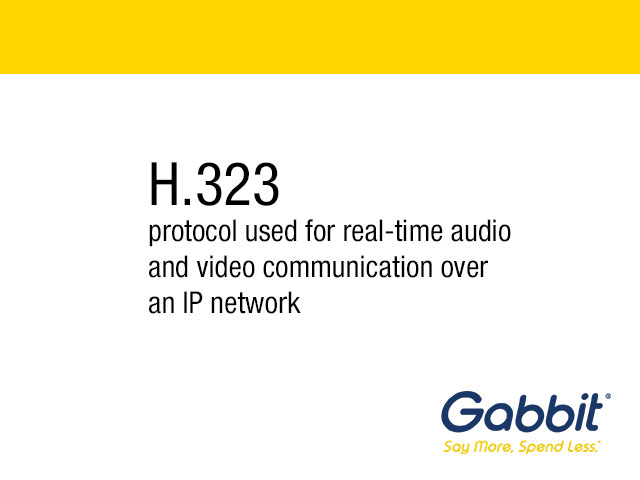What is H.323?
 Here at Gabbit, we recognize that our customers are tech savvy. We strive to provide the latest information in an easy to understand format. This includes knowledge of the various communication protocols used in our digital world. One such protocol is H.323. Let’s answer your questions about H.323 is, how it works, and its relevance in today’s communication landscape.
Here at Gabbit, we recognize that our customers are tech savvy. We strive to provide the latest information in an easy to understand format. This includes knowledge of the various communication protocols used in our digital world. One such protocol is H.323. Let’s answer your questions about H.323 is, how it works, and its relevance in today’s communication landscape.
H.323 is a protocol used for real-time audio and video communication over an IP network. This protocol was first developed in 1996 by the International Telecommunication Union (ITU) and was primarily used for video conferencing. However, it has since been used for a range of communications including voice calls, multimedia streaming, and instant messaging. It is one of the oldest and most widely used VoIP protocols, and is still utilized in many enterprise and government organizations today.
What does it do?
H.323 uses a variety of technologies to ensure seamless communication over the network. This includes the use of codecs to compress and decompress audio and video signals, gatekeepers to manage communication sessions, and endpoints for receiving and transmitting signals.
H.323 is a complex protocol that has evolved over time, and can be broken down into three main components:
- Call signaling: This is the process of establishing, maintaining, and tearing down a call. H.323 uses a variety of protocols for call signaling, including H.323 Registration, Admission and Status (RAS), and H.225 Call Signaling.
- Media transport: This is the process of transmitting the audio and video data over the network. H.323 uses the Real-time Transport Protocol (RTP) for media transport.
- Bandwidth control: This is the process of ensuring that the audio and video data is transmitted at a rate that the network can support. H.323 uses a variety of protocols for bandwidth control, including H.263 RSVP and H.225 Call Signaling.
H.323 Endpoints Consist of Two Parts:
- Gatekeepers: Gatekeepers are central servers that manage H.323 calls. They can be used to route calls, provide address translation, and manage security.
- Terminals: Terminals are the devices that users use to communicate with each other. Terminals can be anything from a desktop computer with a webcam and microphone to a dedicated video conferencing unit.
H.323 has a number of advantages over other VoIP protocols. It is widely supported by a range of vendors and devices. This means that H.323 endpoints from different vendors can communicate with each other without any problems. H.323 is also scalable and specifically designed for large-scale deployments. This protocol also a number of features that make it reliable, such as error correction and congestion control.
H.323 also has some disadvantages, including its complexity. This can make it difficult to deploy and manage without specialized training. When compared to the SIP protocol, H.323 lacks efficiency and security, as well.
H.323 and VoIP Today
Overall, H.323 is a mature and reliable VoIP protocol. It is a solid choice for organizations that need a scalable and interoperable VoIP solution or need to support legacy H.323 devices. Do you have questions about H.323 or other VoIP protocols? Gabbit helps to remove the complexity of switching to VoIP systems. We are experts in everything VoIP. Gabbit gives enterprise-level features with superior cloud phone technology at a fraction of the cost of traditional phone systems. Choose the efficiency, scalability, and reputation-building service of Gabbit VoIP. Contact Gabbit today at 1-855-542-2248.
